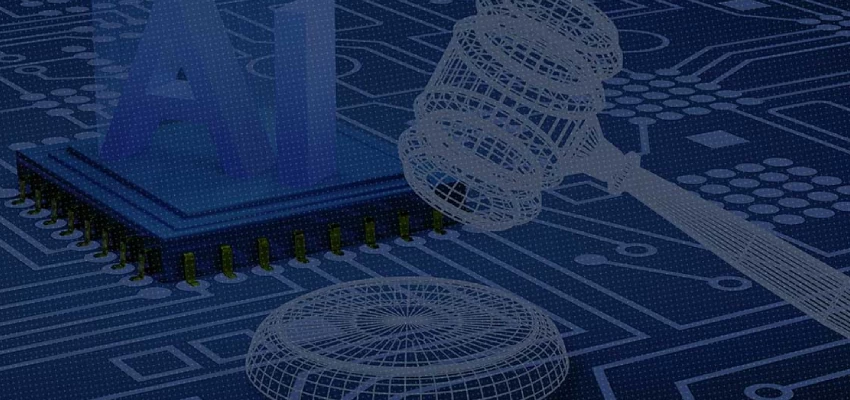Telecommunications in India is currently governed under the Telegraph Act, 1885 (‘Telegraph Act’), the Wireless Telegraphy Act, 1933 (‘Wireless Telegraphy Act’) and provides for a licensing framework regulated by the Department of Telecommunications (‘DOT’) under different licenses such as Unified License[1], Infrastructure Provider[2], Virtual Network Operator[3] etc. Recently, the DOT published the Draft Indian Telecommunication Bill, 2022[4] (‘Bill’) which proposes a liberalized framework governing provision of telecommunications services, which was released for public consultations along with an explanatory note[5].
The Bill aims to develop a modern and future-ready legal framework that aligns telecommunication law with international standards and best practices, recognizing the importance of national, cyber security and public safety concerns. Some of the key features of the Bill include:
Expanded definition of telecommunication services: The Bill seeks to expand the ambit of telecommunication service to include inter-personal communication services, over-the-top communication services[6] (‘OTT Services’), machine-to-machine communication and other services, to the extent that such services are made available to users by telecommunication networks[7]. While certain services are covered[8] in the Telecom Regulatory Authority of India Act, 1997 (‘TRAI Act’), the Bill additionally includes machine-to-machine communication, inter-personal communication services and over-the-top communication services[9] (‘OTT Services’) ostensibly to ensure a ‘level-playing field’ compared to existing telecom service providers who incur significant regulatory costs. While media reports[10] indicate that the Government intends to bring a light-touch regulation for OTT Services, the manner, exemptions[11] or licensing conditions through which it is proposed to be implemented remains unclear.
Firstly, it may be noted that OTT Services have not been defined under the Bill. The Telecom Regulatory Authority of India (‘TRAI’) in its Consultation Paper in 2015[12] defined OTT Services provider as ‘a service provider which offers Information and Communication Technology (ICT) services, but neither operates a network nor leases network capacity from a network operator’. It also recognizes the variance in definitions and broadly also considers that OTT Services may be any internet application that substitutes or supplements traditional telecom services[13] and identifies different types of providers viz. messaging providers and application services such as media services, cloud services etc. In 2020, TRAI recommended[14] that market forces be allowed to respond to the situation without prescribing any regulatory intervention and determined that it was not an opportune moment to recommend a comprehensive regulatory framework for OTT Services, beyond the extant laws and regulations prescribed presently.
Secondly, while some form of regulation for OTT Services has been anticipated from the legislation, full-scale licensing frameworks in addition to complying with other terms and conditions may not be best suited. The finer obligations and requirements would be outlined under the specific licensing agreements. In the context of machine-to-machine communications, a broader study on its impact on emerging technologies, sunrise industries and growth and innovation, especially in the context of internet-of-things, may be warranted before such a licensing framework is proposed to be implemented.
Exclusive privileged and extension of licenses: The Bill seeks to grant upon the Central Government exclusive privilege[15] to provide telecommunication services, establish and maintain telecommunication network and infrastructure and use, allocate and assign spectrum. This exclusive privilege may be exercised through licenses for provision of telecom services, registration for telecom infrastructure, authorization for wireless equipment or spectrum assignment. Exemptions from license, registration, assignment or authorization requirements may be granted by the Government in ‘public interest’.
Similarly, while spectrum allocation may be done through auction primarily[16], the Bill seeks to enable allocation through administrative process (allocation without auction) for certain specified functions relating to government and public interest like defence, transportation, research etc.
Legal recognition for ROW in Telecom Infrastructure: The Bill anchors a much-needed legal framework for providing a right-of-way (‘ROW’) over public[17] or private[18] While public entities are required to grant permissions subject to certain terms and conditions to entities for ROW for telecommunication infrastructure in an expeditious manner with prescribed fee, private entities may enter into agreements specifying mutually agreed consideration. However, an ROW may be acquired by the Central Government over private property if it is denied on request and is ‘necessary to do so in public interest’[19].
Ease in merger control and insolvency norms in Telecom sector: The Bill proposes a notification regime[20] for undertaking mergers, demergers, acquisitions or other forms of restructuring and a comprehensive framework for licensees or assignees who are undergoing corporate insolvency or bankruptcy processes, including control by the Government[21] and responsibility of resolution professionals[22].
The Bill also incorporates special frameworks for default in payments owing to special circumstances including financial stress, competitive environment and empowers deferment of payment, conversion to equity, write-off or relief[23], including for waiving fee, penalty or additional charges for ensuring competition or reliability[24].
Interception and National Security Provisions: The Bill seeks to retain power of the Central Government in taking temporary possession of telecommunication services, network or infrastructure from licensees or providing for priority call routing schemes to ensure safety, apart from directing interception, detention, disclosure and restriction from transmission or any message or class of messages to or from any person, apart from suspension of telecom network of any person or class thereof. In addition to the above, Central Government is also empowered to, inter alia, suspend or prohibit use of specified telecom equipment from specified countries or persons.
It may be noted that in Shreya Singhal[25], the Supreme Court upheld the validity of Section 69A of the Information Technology Act, 2000 (‘IT Act’) on the observation that several safeguards were present in the latter, including the constitution and meeting of a ‘Review Committee’ to record findings which may set aside directions of interception, monitoring, blocking or suspension issued by authorities. With reference to suspension of internet, this is significantly, the first time that an express power[26] has been carved to suspend communications. It was also held by the Supreme Court[27] in the context of balancing freedom of speech and suspension powers, that the power to suspend internet is also balanced by certain safeguards, including that review committees must hold periodic reviews and ensure that temporary orders are reviewed periodically, and decisions are arrived on the same. Notably, the Bill does not feature or indicate the mention of any review committee or an oversight mechanism for exercise of such powers by the Central Government, as is currently provided under the IT Act. This may give rise to a constitutional challenge in view of absence of safeguards such as review committee.
Regulation of Unsolicited communications: The Bill also seeks to regulate transmission of certain ‘specified messages’[28] and empower the Government to prescribe measures relating to prior consent for receiving such messages, maintenance of ‘Do Not Disturb’ lists and mechanism to report contraventions. The Bill also prohibits users from furnishing false particulars, suppressing material information or impersonating another[29]. Given that the TRAI Act has not been repealed, it is unclear if the Telecom Commercial Communications Customer Preference Regulations, 2018[30] (‘TCCPR’) would operate alongside these provisions.
Changing the TRAI-DOT Dynamic: The Bill proposes certain amendments to the TRAI Act which change the relationship between TRAI and DOT, including requirement to seek recommendations of TRAI in specified matters and refer recommendations which cannot be implemented. The Bill also seeks to alter the precedence of TRAI through amendments to delete non-obstante clauses[31] in the TRAI Act, thereby empowering DOT to regulate the Telecom Industry, diluting recommendatory and other powers of the TRAI.
While the Bill remains to be a positive step in simplifying and comprehensively reflecting a transforming telecommunications sector, certain finer aspects of the Bill may have to be refined further, without which its adaptability to future-tech may become marginally more challenging. While public consultations are underway on the Bill, there have been reports[32] that the Bill is likely to be implemented in the next six to eight months replacing the existing frameworks.
[The authors are Partner and Senior Associate, respectively, in Data Protection and TMT practice at Lakshmikumaran & Sridharan Attorneys, New Delhi]
- [1] License Agreement for Unified License, Department of Telecommunications, available here
- [2] Guidelines for Registration of Infrastructure Providers Category-I (IP-1), available here
- [3] License Agreement for Unified License for VNO, Department of Telecommunications, available here
- [4] Draft Indian Telecommunication Bill, 2022, Department of Telecommunications, available here
- [5] Explanatory note to the draft Indian Telecommunication Bill, 2022, available here
- [6] Clause 2(21), Draft Telecommunication Bill, 2022
- [7] Clause 2(20), Draft Telecommunication Bill, 2022
- [8] Section 2(1)(k), Telecom Regulatory Authority of India Act, 1997
- [9] Clause 2(21), Draft Telecommunication Bill, 2022
- [10] Light touch regulation for OTT communication apps: Minister Vaishnaw, LiveMint, available here
- [11] Clause 3(3), Draft Telecommunication Bill, 2022
- [12] Consultation Paper on Regulatory Framework for Over-the-top (OTT) services dated March 27, 2015, Telecom Regulatory Authority of India, available here
- [13] Consultation Paper on Regulatory Framework for Over-The-Top (OTT) communication Services dated November 12, 2018, available here
- [14] Recommendations on Regulatory Framework for Over-The-Top (OTT) Communication Services dated September 14, 2020, available here
- [15] Clause 3(1), Draft Telecommunication Bill, 2022
- [16] Para 20, Explanatory Note to Draft Telecommunication Bill
- [17] Clause 13, Draft Telecommunication Bill, 2022
- [18] Clause 14, Draft Telecommunication Bill, 2022
- [19] Clause 14(3), Draft Telecommunication Bill, 2022
- [20] Clause 19, Draft Telecommunication Bill, 2022
- [21] Clause 20(3), Draft Telecommunication Bill, 2022
- [22] Clause 20(4), Draft Telecommunication Bill, 2022
- [23] Clause 21, Draft Telecommunication Bill, 2022
- [24] Clause 22, Draft Telecommunication Bill, 2022
- [25] Shreya Singhal v. Union of India, (2015) 5 SCC 1
- [26] Clause 24(2)(b), Draft Telecommunication Bill, 2022
- [27] Anuradha Bhasin v. Union of India, (2020) SCCO SC 25
- [28] Clause 33(1), Draft Telecommunication Bill, 2022
- [29] Clause 34, Draft Telecommunication Bill, 2022
- [30] Telecom Commercial Communications Customer Preference Regulations, 2018
- [31] Clause 46(e), Draft Telecommunication Bill, 2022
- [32] New Telecom Bill in 6-10 months, LiveMint, available here












